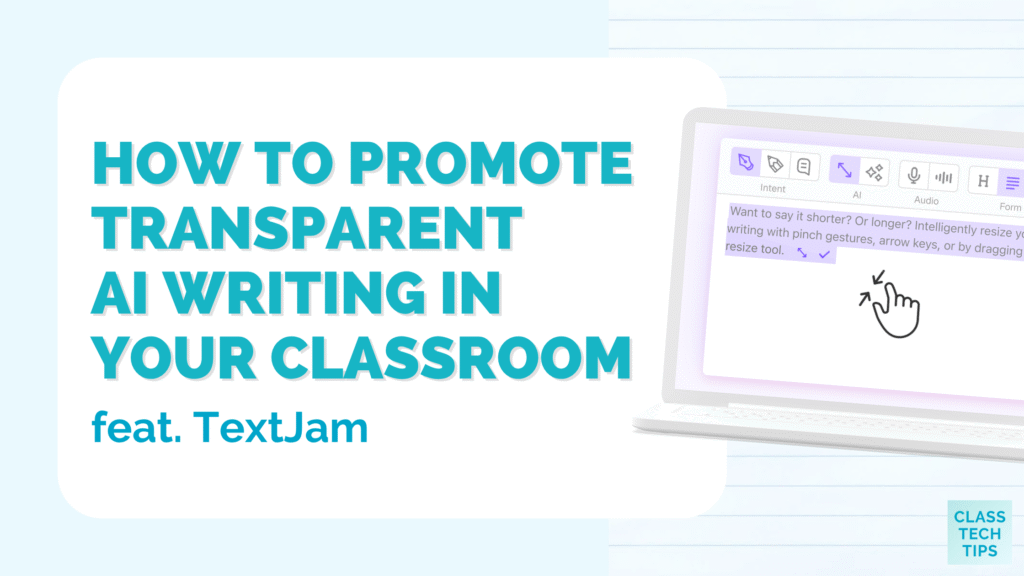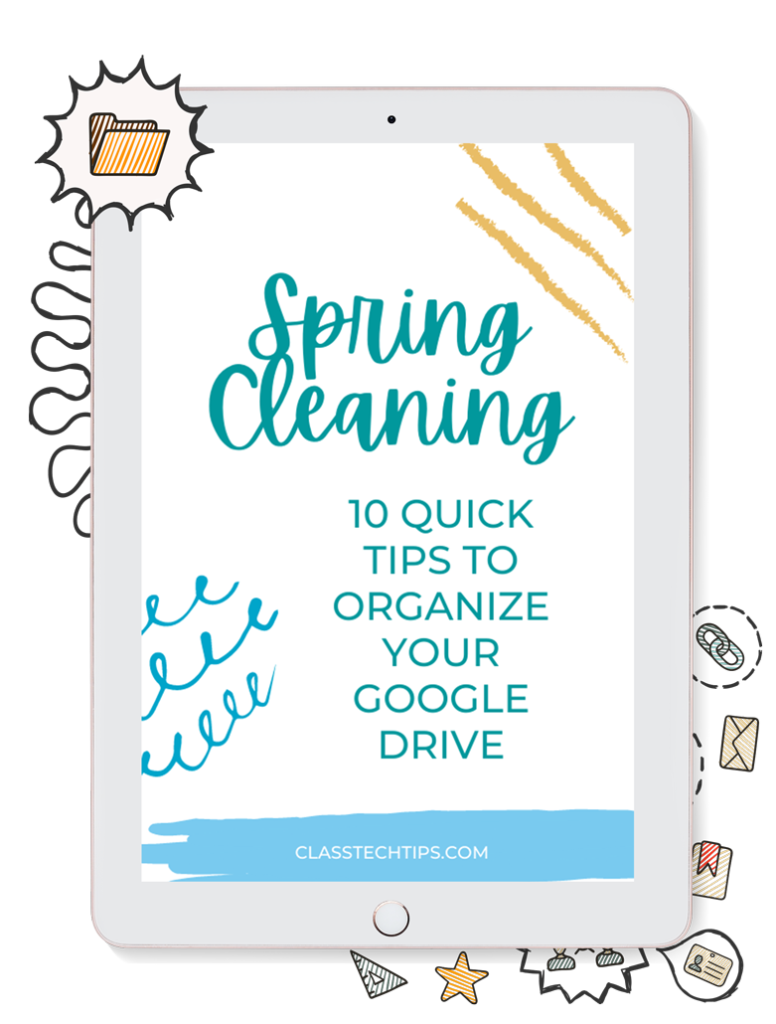How do you teach writing in the age of artificial intelligence? With artificial intelligence becoming a part of our daily lives, it isn’t hard to see that the way we think about writing instruction is changing dramatically. Although the writing process is evolving as we speak, there are opportunities to promote transparent AI writing in your classroom.
When working with schools and districts, one of the questions I often get from teachers is about how to support student writers who have access to AI-powered tools. Many teachers are now trying to navigate finding the balance between how students might use AI as a support tool while helping them develop their authentic voices.
Today on the blog, I have a tool to share with you that can help promote transparent AI writing in your classroom this year. It’s called TextJam. And if you are using artificial intelligence with students it’s one you will certainly want to take a look at!
Using AI to Support Writing
As students explore AI tools on their own, outside of the classroom, you might decide to introduce this technology with support and modeling inside of your classroom. Artificial intelligence writing tools aren’t a substitute for student writing, but instead can play a part in the writing process.
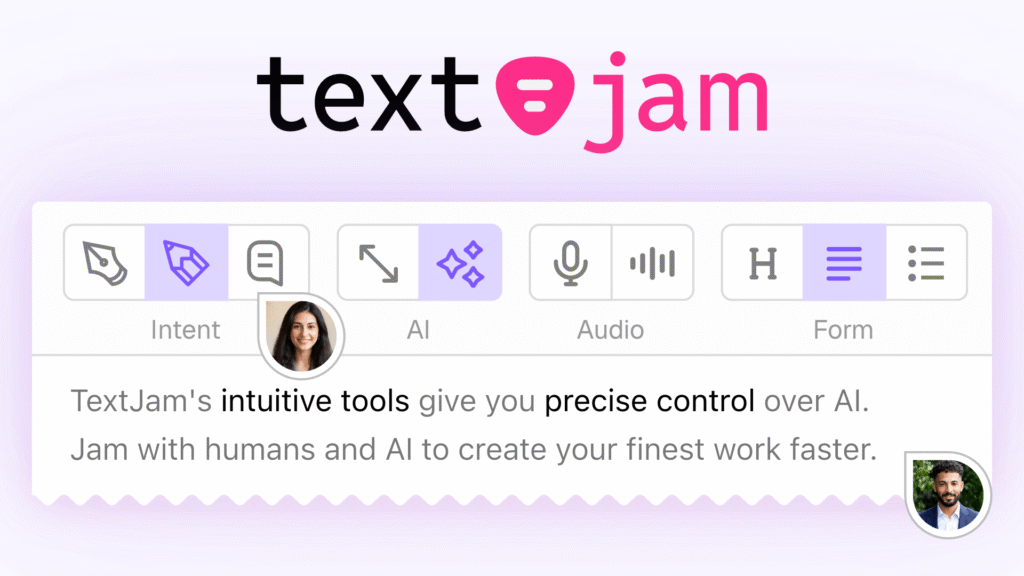
AI writing tools can help students brainstorm ideas, refine the structure of their writing, and check grammar, too. However, when these tools aren’t used transparently, it can absolutely blur the line between support and substitution. Modeling transparency and facilitating conversations around responsible AI use is more important than ever. Instead of jumping from A to Z, students can use AI tools throughout the writing process if you promote transparent AI writing.
Teachers can guide students to use AI with intention to help them reflect on the process and make choices about when technology adds value. When it comes to using AI it’s essential that students understand how and why AI can support their work, as well as the right time to leverage this powerful technology.
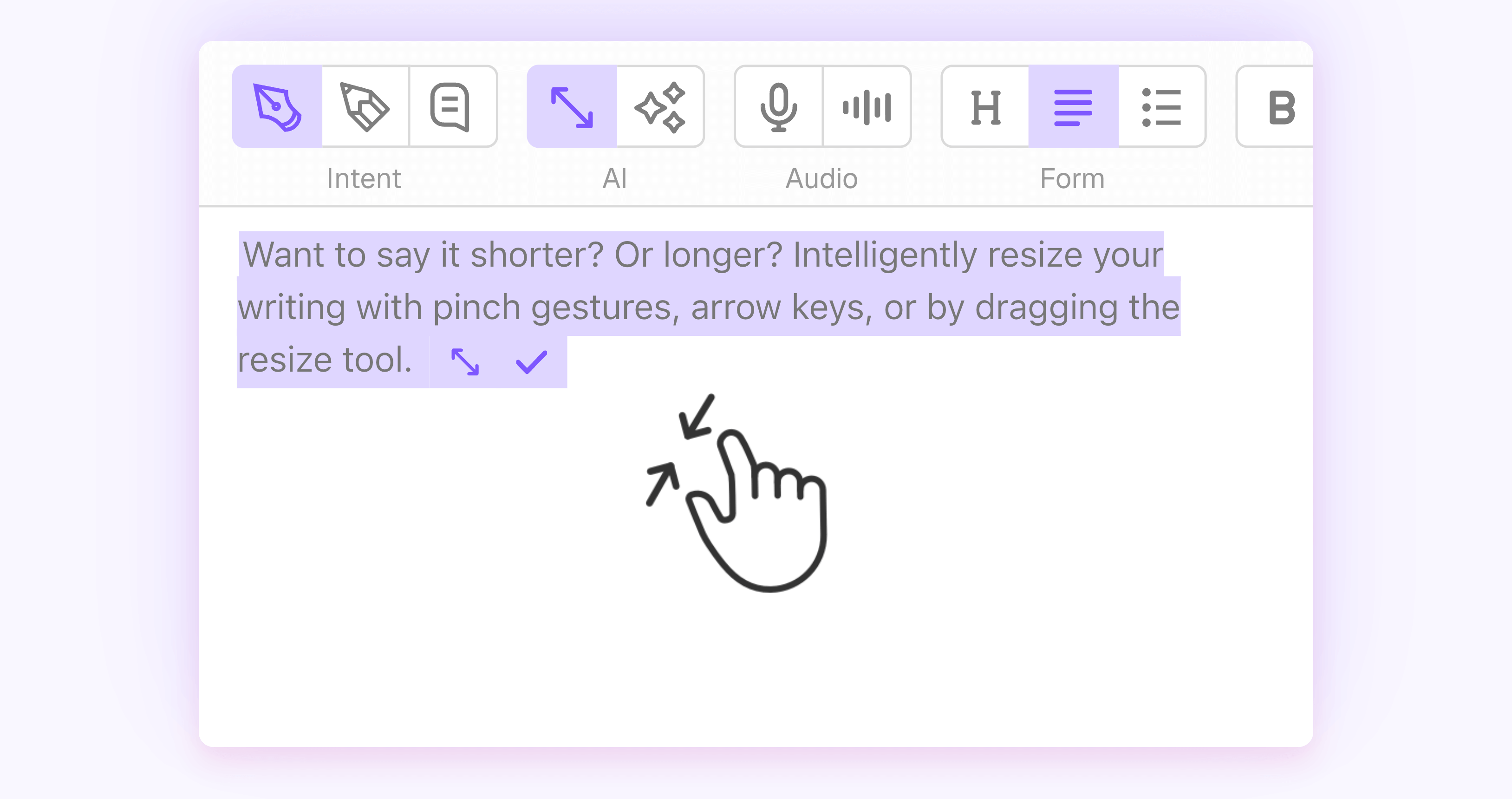
This is where a tool like TextJam comes into play. TextJam can help students write authentically while giving educators insight into how AI supports their writing process.
Learn more about TextJam and how to support student writers >>
How Writing is Changing for Students
Writing in the age of AI looks different than it did even a few years ago. Students can now easily access tools that generate ideas, provide instant feedback, and even draft entire paragraphs. Although it might seem like a way for them to save time on an assignment, it also raises new questions about authorship, originality, and learning.
This shift calls for more transparency in the writing process. Instead of hiding AI use, students can learn to document and reflect on how these tools contribute to their work. And when educators can see how AI influenced a piece of writing, they can give more targeted feedback, focusing on where students actually need extra support.
Using TextJam to Support Student Writers
TextJam is a new AI writing platform built to help students and teachers embrace transparency in the writing process. It includes features that clearly distinguish student writing from AI contributions. With this tool, everyone involved in the process can see exactly what’s happening on the page.
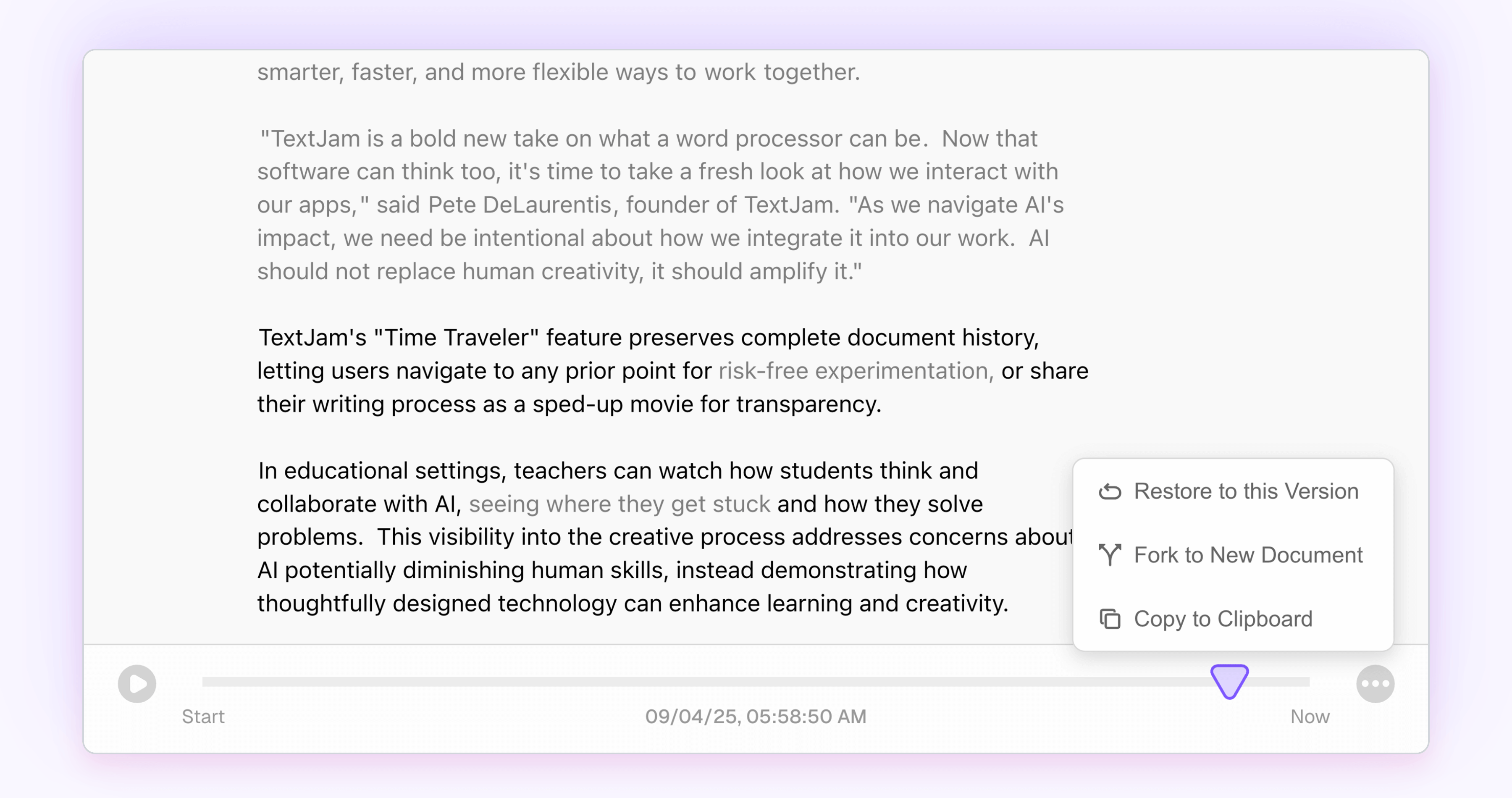
Students stay in control of their writing as they switch between Pen Mode (their own words) and Pencil Mode (AI assistance) as they work. Teachers can then view instant data that show the percentage of text written by the student versus generated by AI.
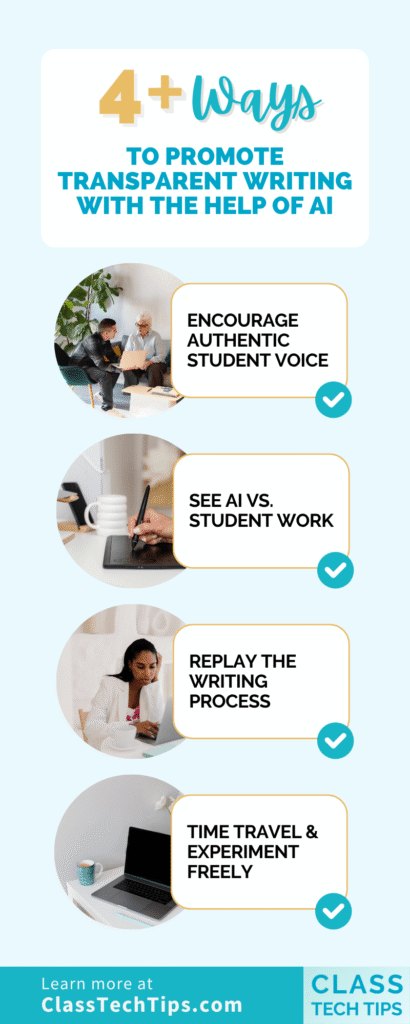
TextJam also captures the writing process as a short replay so teachers and students see how ideas developed over time. This not only supports transparency but encourages reflection, helping students think critically about how they used AI to shape their work. As you can see in the screenshot above, the quick video replay can give teachers actionable information to bring back to conversations with students.
In addition to writing on their own with the support of AI, TextJam also supports live group writing sessions. Similar to what students might have already experienced in a shared Google Doc, they can brainstorm, edit, and revise together in real time. TextJam gives teachers insight into both group dynamics and individual contributions to the digital page.
5 Ways to Promote Transparent Writing with the Help of AI
If you want to promote transparent AI writing this school year, here are a few ways TextJam can support this mission.
Encourage Authentic Student Voice
AI writing tools can support students without taking over their ideas. With TextJam, students can write in pen when they want to stay fully in control, and switch to pencil to put their rough ideas down and get help refining their words—from AI or from another student.
This distinction helps students see where their words end and AI’s begin. Over time, this helps them grow more confident in their own writing style while still learning from the feedback and structure AI provides.
See AI vs. Student Work
TextJam gives teachers and students a clear breakdown of how much text was created independently versus with AI support. These instant analytics help teachers provide more personalized feedback and guide conversations about appropriate AI use.
When students see the data, they can reflect on how often they turn to AI. This can help them consider whether they’re using it as a true collaborator or relying on it too heavily.
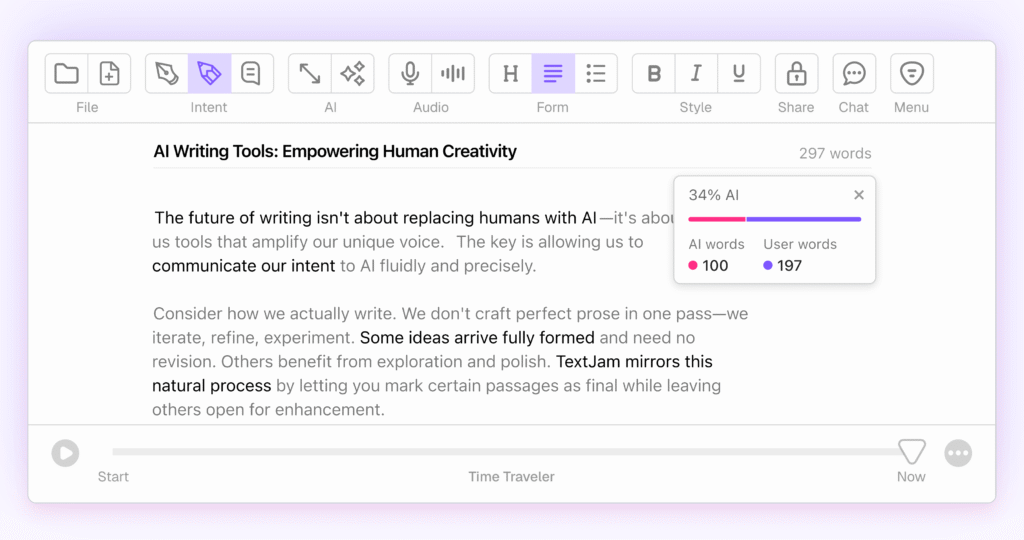
Replay the Writing Process
Understanding the writing process is just as important as evaluating the final draft. TextJam lets students and teachers replay how a piece of writing has evolved in a quick 15-second video. This replay shows where students brainstormed, revised, or used AI prompts for guidance. It’s a powerful way for teachers to provide feedback that focuses on effort, strategy, and progress rather than perfection.
Time Travel & Experiment Freely
The ability to jump back to earlier versions of writing helps students take creative risks. In TextJam, students can “time travel” through their drafts. Teachers can highlight these moments in conferences or reflections, helping students see revision as exploration rather than correction.
Real-Time Group Projects
Collaborative writing may already be familiar to your students, but TextJam takes it to the next level. Students can co-write in real time, and teachers can see how each student contributes. They can also view how AI supports the group process as the collaboration takes place during an assignment. This makes it easier to model transparent teamwork and ensure every student’s voice is heard.
Fostering Conversations About AI in the Classroom
Tools like TextJam make it easier to start meaningful discussions about AI writing in academic settings. Instead of focusing solely on what AI can produce, educators can guide students to ask, How did I use AI? Why did I choose to use it here?
By promoting transparency, educators can turn AI writing into a shared learning experience rather than a hidden shortcut. Instead of discouraging AI use, they can help students understand how to use it responsibly, creatively, and with confidence.
Ready to explore transparent AI writing in your classroom? TextJam makes it easy for teachers and students to get started. You can sign up for free at TextJam.com and explore how it supports both independent and collaborative writing.
